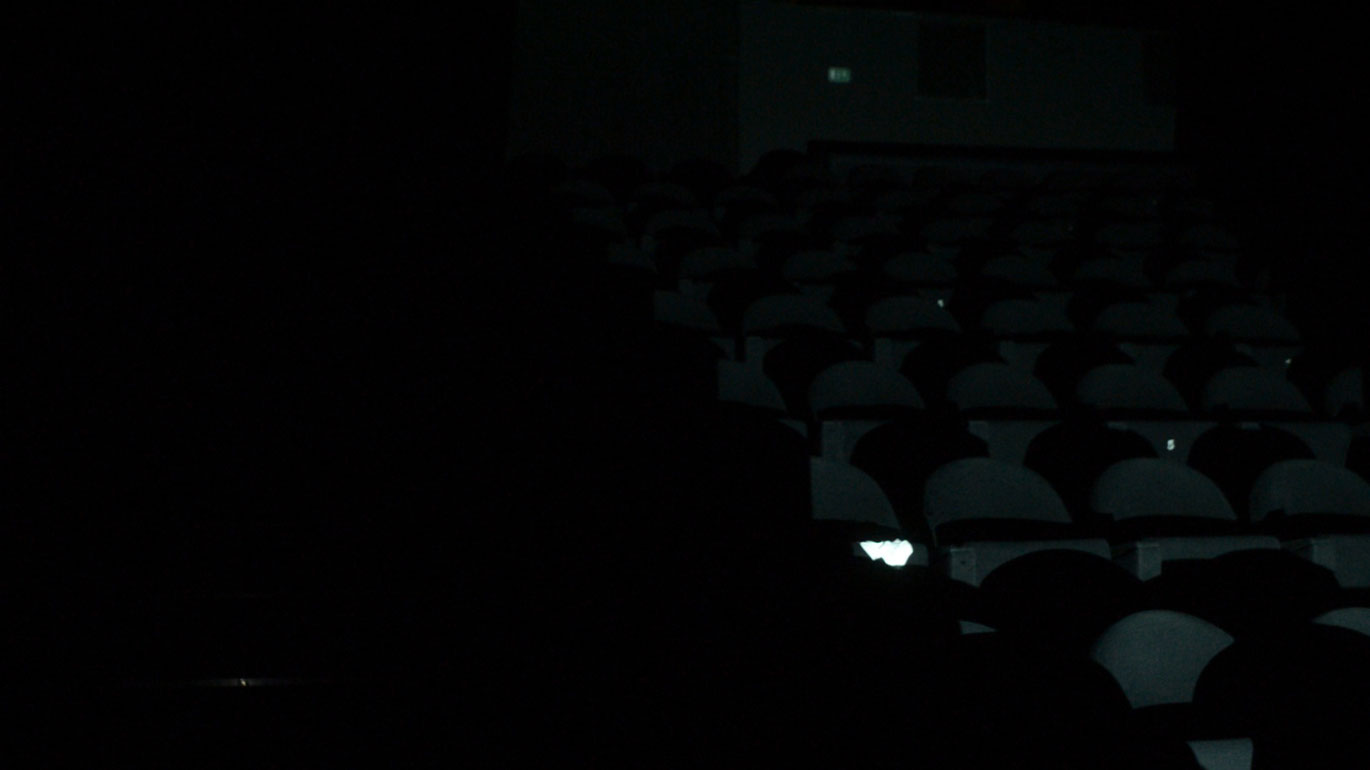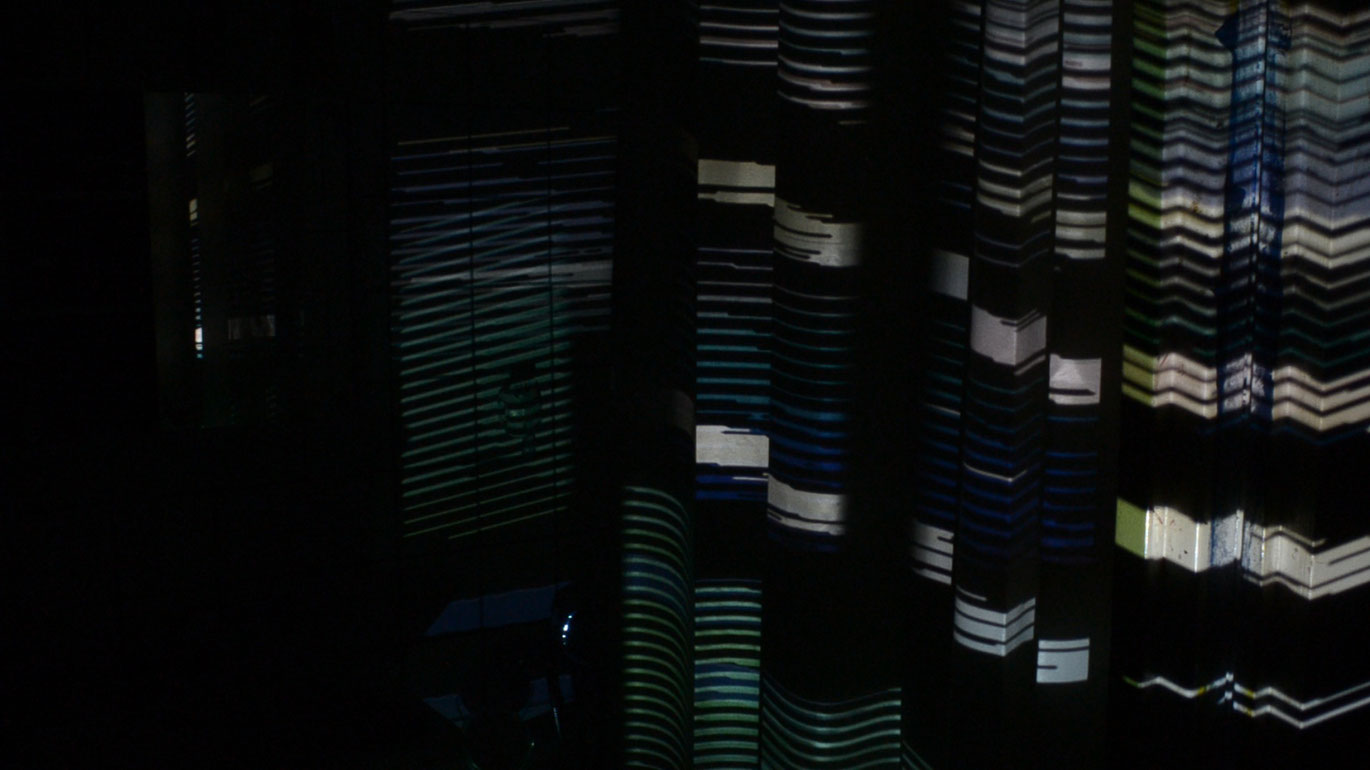darkroom
In darkroom, Billy Roisz surveys several pitch-black interior spaces from different perspectives and turns a cinematic darkroom into an abstract chamber of wonders. An explosion breaks through the black image. With changing camera, light, and microphone positions, the artist looks into a cinema, a rural storage building, and a residential home. The audiovisual equipment is causing trouble there, off screen. Abstract projections cryptically illuminate the nocturnal mise-en-scène, producing a certain lack of orientation in the viewer. This stimulates the appeal of the senses, their countless interpretations and aesthetic variations. Are we in the Austrian film museum or on a suburban disco’s drab stairs leading to the stage? For just a few seconds rows of seats or stairways flash. Then the viewer is conveyed straight away into ambiguity, and then from the start, again and again. Is that a nut tree that we see outside; or maybe a Ficus-Benjamin in the living room? Grid patterns are cast on the sparse inventory in Roisz’ cinematic spaces, which in the darkness divulge a few details, such as bathroom fittings or ceiling pipes.
darkroom is a fulminant game in which it is impossible to distinguish optical illusions from manipulated, real settings. The musicians Dieter Kovacic and Peter Kutin have created a mysterious life for the deserted black cube with their soundtrack based on a mixed room sound. As in the other works by Billy Roisz, the music and image plane are inseparably interwoven. Billy Roisz did not need any additional special effects in the montage, or any footage, or any added music in postproduction to choreograph a minimalist space with maximum ambiguity.
darkroom is an enchanting labyrinth of image and sound that bursts the border between abstract and concrete. The experiment captivates more in its reserve than in its monstrosity. darkroom conveys an endless desire to explore in the dark and sets engulfing paths in the gloom, that can be marveled at like a “Mullholland Drive” of the digital avant-garde.
(Petra Erdmann)
Translation: Lisa Rosenblatt
artist´s statement
I am also dealing with the dark room as a projection area for inner conditions - let´s say in the head room and body room - may they be of phsychological origin (like fragments of thoughts, barrages of images, monsters, anxiety) or of physiological nature like variuos optical illusions in darkness and in the transitional state from wakefulness to sleep (like phosphenes, exploding head syndrom, prisoner´s cinema). Same for the acoustic perception.
For the technical implementation of the recording of sound and video several dark rooms have been set up as an audio-visual apparatus:
two video projectors threw abstract images (generated by the sound in the room) into the pitch dark room where several light-sensoric devices catched beams and flashes of the light of the projections and so either triggered little motors that where placed all over the room or computer generated sound samples. This room - sound was again feeded into the video generating tools (analogue video mixing desk, synchronator). The sound was recorded with several microphones throughout the room, the light and image projections in the room was recorded with a camera. no effects, additional imagery or sound added in the process of editing & assembling.
darkroom
2014
Austria
13 min 21 sec



